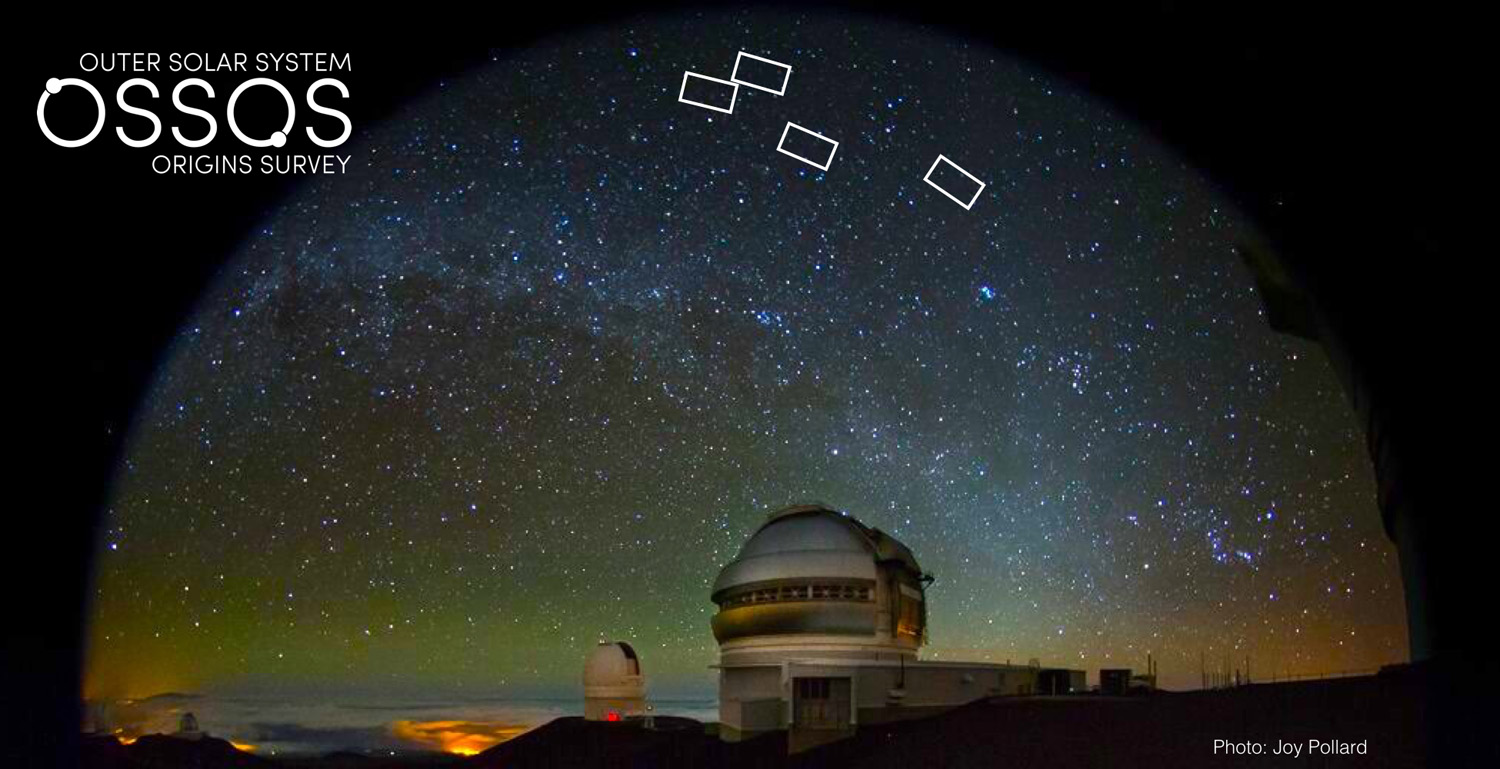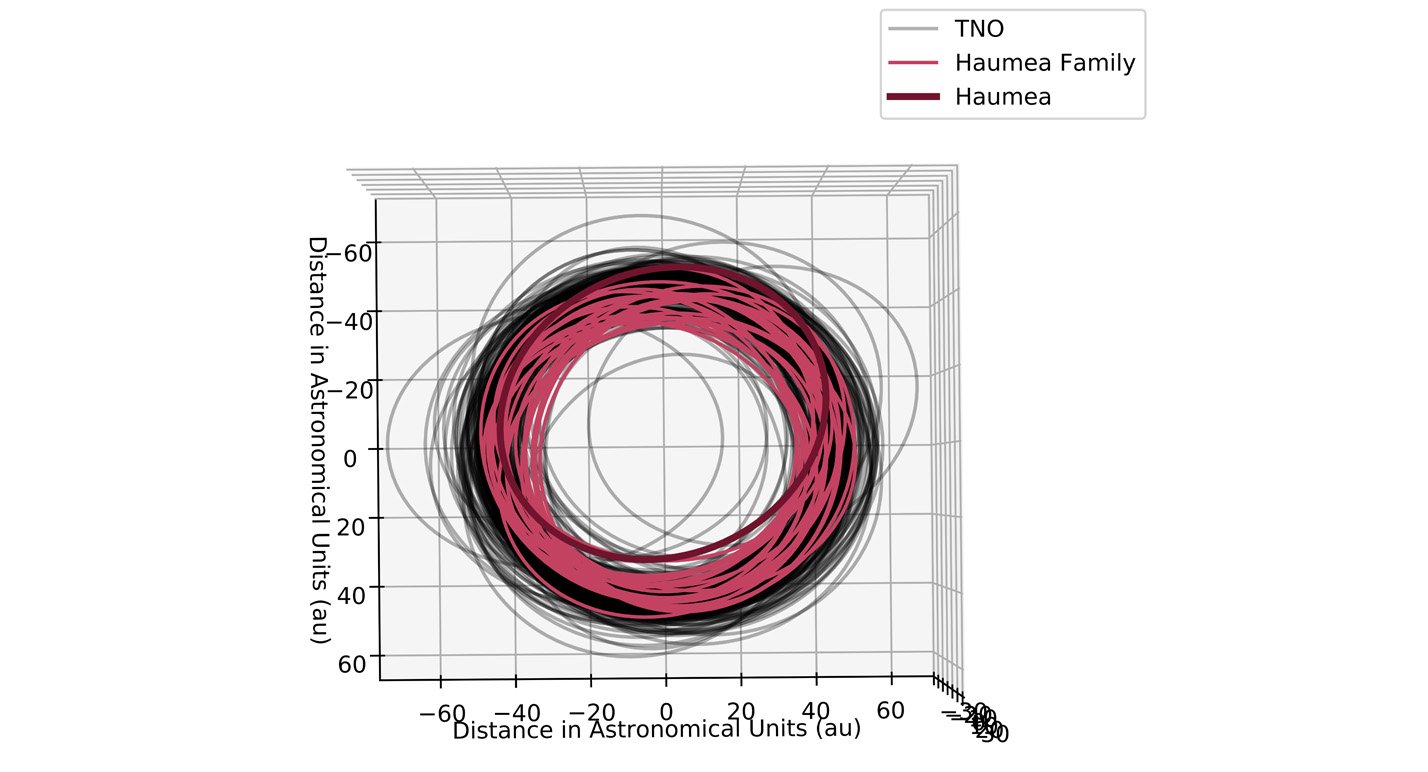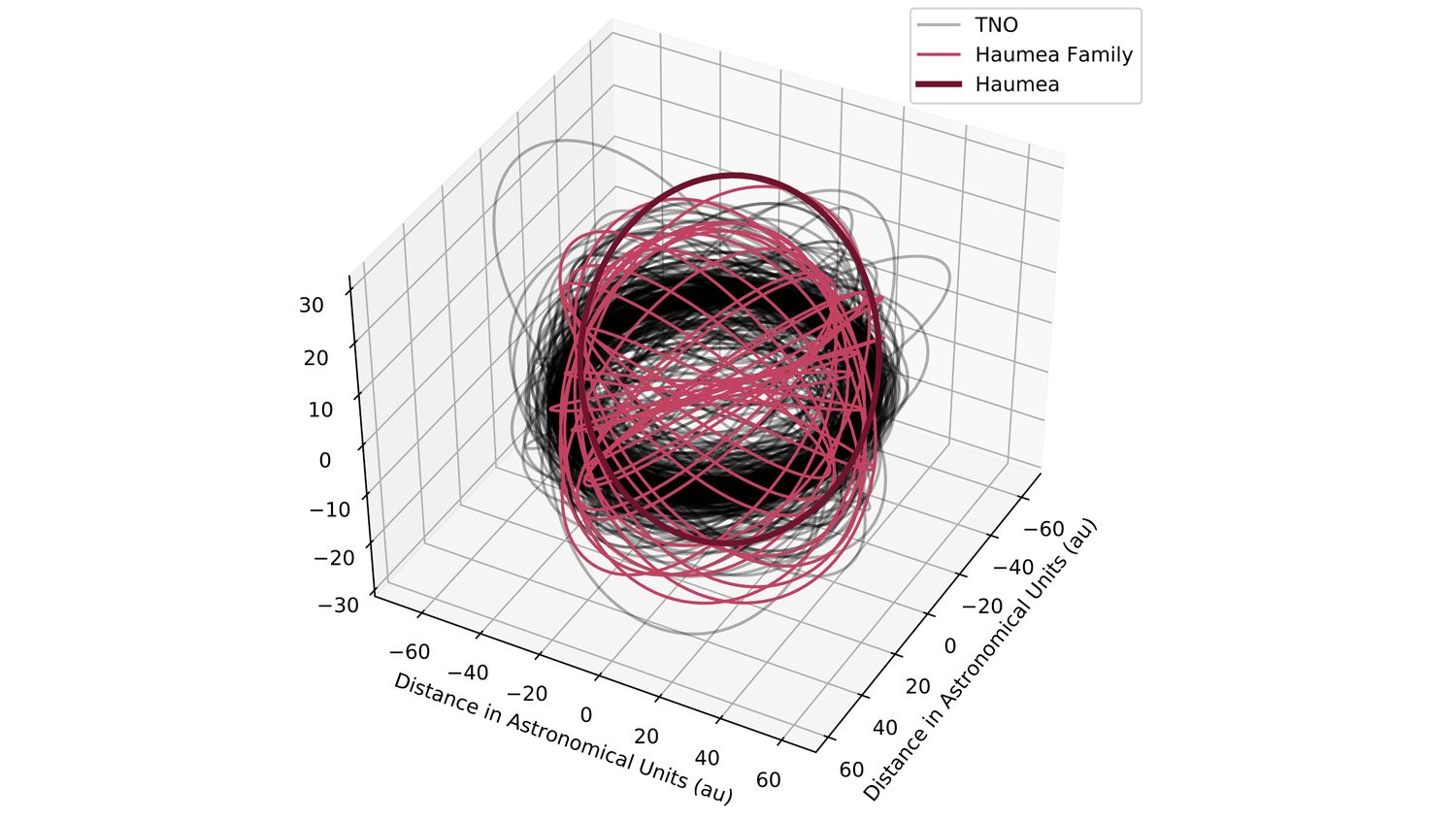The distant Solar System contains a large reservoir of objects beyond the orbit of Neptune, which are the icy remnants of planetary formation. These small icy bodies are challenging to discover, but their orbital properties and surface composition provide critical information about the formation and evolution of the Solar System. The Outer Solar System Origins Survey (OSSOS) and its companion surveys (CFEPS, HiLat, Alexandersen) covered 1,209 square degrees and discovered more than 1,000 trans-Neptunian objects (TNOs). The main surveys were conducted using the Canada-France-Hawaii Telescope on Maunakea.

Hidden among this large number of discoveries, Dr. Rosemary Pike (ASIAA) identified 3 objects which may belong to the Haumea family. This family is thought to have formed as the result of a collision several billion years ago, and the family members are identified by their similar orbital elements and surfaces which display water-ice. While the asteroid belt contains more than 100 collisional families, only one family has been identified in the Kuiper belt. Understanding the collision which created this Kuiper belt family will provide critical information about the types of collisions which have occurred in the Kuiper belt, and may provide insight into how to best search for additional TNO families.
[ad_336]
For the majority of TNOs, there are significantly more small TNOs than large TNOs, but the Haumea family detections did not fit this pattern. “The small number of Haumea family detections was surprising given the large survey area of OSSOS. It was particularly confusing that the few detections were all bright. The survey would have detected much smaller Haumea family members if they were in the survey fields,” said Dr. Pike. The survey found 1-3 large Haumea family TNOs, so it also should have found 10-30 small family embers- but these objects were missing! Dr. Pike and her team carefully tested the survey sensitivity and models of the orbital distribution of the Haumea family, and determined conclusively that the Haumea family has significantly less small objects than the other TNO populations.

This result is modeled as a shallow slope to the size distribution. The OSSOS survey has well understood discovery biases, so Dr. Pike’s team was able to do the first statistically rigorous testing of the Haumea family size distribution, which provides the first robust constraints on how many small and large Haumea family members there are in the Kuiper belt.
[rand_post]
“A dearth of small members of the Haumea family revealed by OSSOS”, published in Nature Astronomy, shows that the shallow size distribution of the Haumea family members is different from the size distribution of all other TNOs, which has important implications for the formation of this family. A shallow size distribution is produced by graze and merge simulations, where an impactor has a grazing collision with the proto-Haumea, slows, and returns to collide again and merge with Haumea. The family is created as merged objects rotate quickly and shed material. However, the orbital distribution created by a graze and merge collision does not reproduce the orbital distribution of Haumea family members, which is isotropic- the density of objects does not depend on which direction they were ejected. An isotropic orbital distribution results from a catastrophic collision, where the impactor is immediately destroyed, but this produces a steep size distribution incompatible with the OSSOS results. This result will inspire future work on the Haumea family, which will need to focus on understanding possible formation scenarios which reproduce both the observed orbital and size distributions.

The Research team included Rosemary Pike (ASIAA), Benjamin Proudfoot (Bringham Young University), Darin Ragozzine (Bringham Young University), Mike Alexandersen (ASIAA), Steven Maggard (Bringham Young University), Michele Bannister (Queen’s University Belfast), Ying-Tung Chen (ASIAA), Brett Gladman (University of British Columbia), JJ Kavelaars (NRC Herzberg), Stephen Gwyn (NRC Herzberg), and Kathryn Volk (University of Arizona LPL).